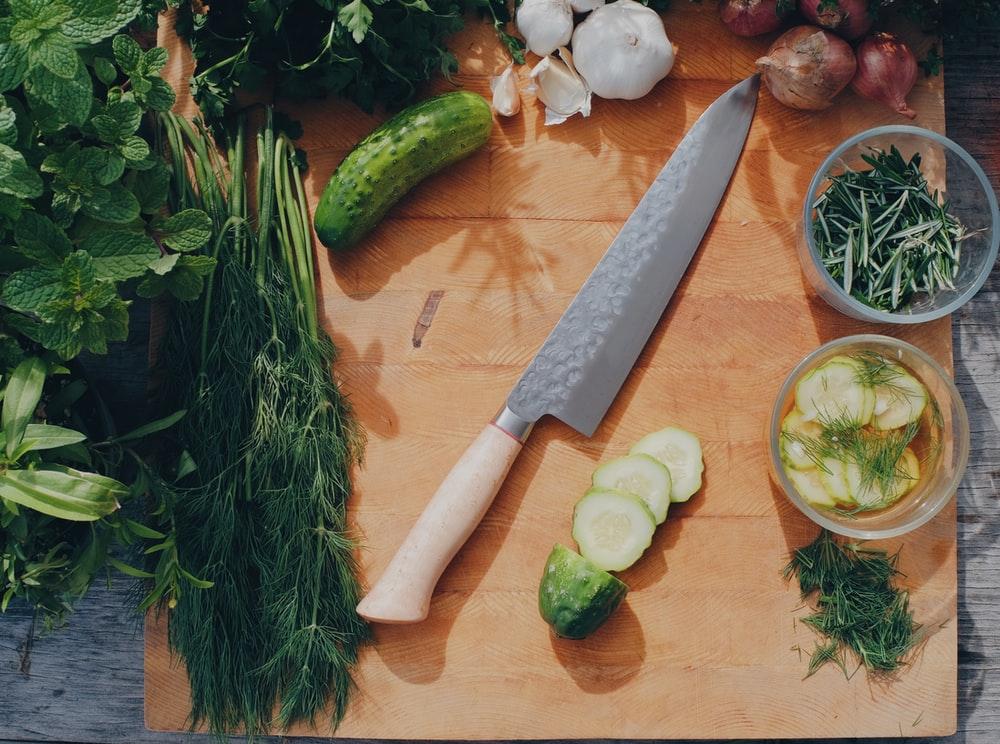Many individuals see the whole knife-buying process as daunting. It is particularly true when consumers consider acquiring large or unusual knives. Meanwhile, it is one reason to go out and buy a set of kitchen knives when you’ve been using kitchen knives your entire life. But it is different from buying a knife in which you only have little or no expertise. Unfortunately, this is frequently the scenario in which individuals find themselves while looking to buy a Santoku knife.
The term “santoku” basically translates to “three virtues”. The manufacturer selected the knife name to symbolize its three primary functions: chopping, slicing, and dicing. And, though a Santoku knife’s functions are quite similar to a chef’s knife, the two are clearly distinguished by their design. Moreover, what you do not notice is that their approaches differ as well.
Strength
Although ceramic blades are very sharp and thus do not fold or flex, they are far too delicate for the activities you can sustain with this kind of knife. Therefore, if you are an avid ceramic lover, it is recommended to be cautious with your cutting board selection and opt for one made out of plastic or wooden since these will be gentler on your knife than crystal or marble.
The tasks for which the santoku knife is used necessitate that the blades and handles be securely connected. As a result, it is recommended to look for something with a triple-riveted and full-tang blade. But, if triple-riveted is not an option, ensure the knife you choose has at least a full tang. The last thing you would want is to chop something and discover that your blade and handle have disconnected. It may even be a risky situation.
Useful Tall Blades
When you buy a Santoku knife, you will wonder why santoku knives have tall blades? There are two possible reasons for this. To begin, in order to achieve the paper-thin cuts that Santoku knives are famed for, the blade of your knife should be nearly as tall as (or, ideally, taller than) the food you intend to slice. Second, the blade will act as a barrier during slicing, ensuring that your cuts are even during the entire slicing process.
On the other hand, blades less than two inches in width will most likely produce irregular slices, similar to what you would get if you tried cutting through a sheet of paper with only the points of scissors.
Hollow Blade Sides
You might have noticed that several, if not most, santoku knives have grooves around their edges. Or, if you are new to this blade style, please read on to learn what all these markings are, how they function, and how they are extremely crucial in Santoku knives.
These are on the blunt edge sides of the blade. And these blades’ grooves provide an anti-suction condition, preventing foods from sticking on the blade.
Finally, the knife that you will select should be the one that perfectly meets your grip and cooking technique. A santoku knife is a good bet for meals heavy on fish, for example. Meanwhile, a chef’s knife is ideal if you need a strong all-purpose tool to carve meat, chop tiny bones, or cut vegetables and fruit. But when you spend more time in the kitchen making several recipes, it’s worth investing in different kinds of knives.
Also read about:
USES OF BUILDING A SHED
A Permanent Recruitment Consultant For Your Business
5 Ways to Make Technology Use Easier

